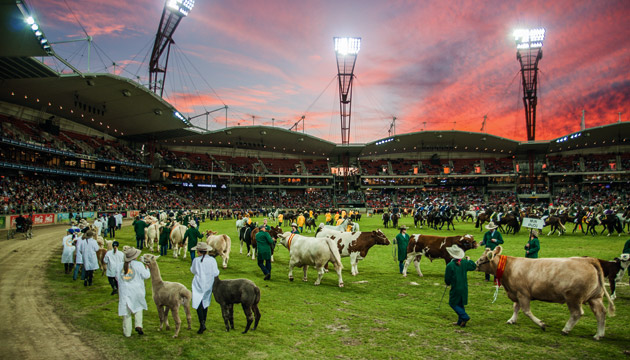Whirling carousels of tradition and new ideas, agricultural shows are thriving community showcases and an important nexus between the city and the bush.
Story and photos Mandy McKeesick
Australia’s agricultural show movement started with a bang in the 1820s, when show societies were established to promote agriculture, showcase livestock and educate farmers. The first show was held in 1822 in Hobart. Sydney was quick to follow with its inaugural show, held in 1823.
The show movement withered in the 1840s in the face of the country’s first depression. Drought and a slump in wool and wheat prices meant the Agricultural Societies of NSW folded and didn’t reform for 24 years. Melbourne’s first show, in 1842, was a complete failure and it did not kick off again until 1848, when ploughing demonstrations were held at Moonee Ponds.
Once the show movement revitalised, it spread from the cities to the interior, following and charting the progress of agricultural expansion, encouraging competition, showcasing new strains and bringing cutting-edge technologies to farmers.
Today there are 586 shows across Australia. New South Wales has one-third of the societies, with 194, followed by Queensland (129), Victoria (115), Western Australia (69), South Australia (50), Tasmania (23) and the Northern Territory (6). “The number of show societies has been fairly constant over the past 15 years, but attendance rates come in waves,” Agricultural Shows Australia board member David Peters says. “Shows are still the main representatives of agriculture in modern society and they are important in providing that rural-city link. Not just cities, but some of the bigger towns are quite insular and kids have never had exposure to agriculture. The shows introduce them to animals and provide a connection with what we eat. The very big shows, such as the royals, and the very small shows, especially, are also important for bringing people together.”
Shows have survived wars, and stubbornly resisted both internal and external pressures to close. “Ground availability is one of the big issues as showgrounds come under pressure from development,” David says. “Other shows are faced with a $50,000 land rental bill before they even commence, and many shows conduct extra events, such as vintage machinery days, to help cover expenses.”
In addition, the modern show faces competition from other forms of entertainment and must continually strike a balance between tradition, the need to stay relevant and the need to evolve.
This story excerpt is from Issue #114
Outback Magazine: August/September 2017










